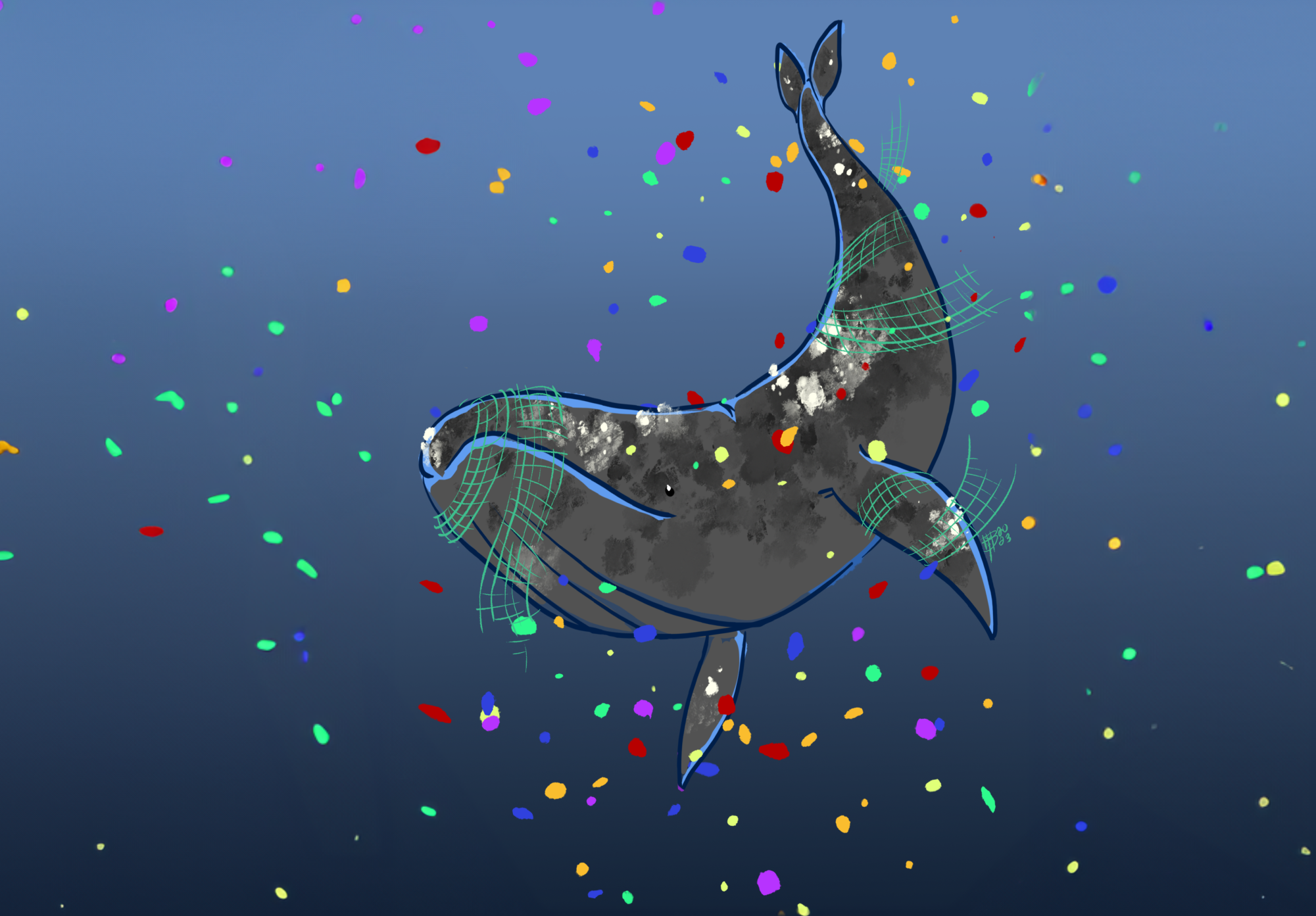Correction: In the August 7 version of the article, there was misinformation. Microparticles are any particles smaller than five millimeters.
Researchers at Oregon State University estimate that gray whales are consuming between 6.5 and 21 million microparticles per day.
The study, which was recently published in the journal Frontiers in Marine Science, involved analyzing the poop of gray whales as well as the prey, zooplankton, to determine their daily consumption of microparticles.
The researchers looked at the Pacific Coast Feeding Group, a subgroup of 230 gray whales, and focused specifically on the lactating and pregnant female gray whales as they consume the most food each day in comparison to the general population.
Microparticles are particles smaller than five millimeters. They include items such as microplastics (small, broken down plastic particles) as well as other human-sourced materials like fibers from our clothes.
It was conducted by OSU’s Coastal Oregon Zooplankton Investigation, a team of scientists across different OSU colleges, and funded by the Agricultural Research Foundation at OSU as well as Oregon Sea Grant.
COZI’s primary goals were to determine the different species and nutritional values of the zooplankton and analyze the amount of microparticles found in the zooplankton.
“I just wanted to know more about what (they are) eating — is it good for them? Is it bad for them?” Leigh Torres, associate professor and co-author of the study, said. “And so the good for them part is looking at the caloric content, the bad for them part was, ‘okay, well, how much microplastics might they be ingesting?’”
They sorted, identified and then ground up the zooplankton before analyzing their nutritional content. In doing so, they also set aside microparticles found within the zooplankton.
It was estimated that each zooplankton contained an average of four microparticles per gram of tissue.
“That doesn’t sound like too much, but when you think about how little a gram of tissue is, and then four micro particles in that, then when you extrapolate that out to how much these huge animals need to eat in a day, that number just becomes astronomical,” Torres said.
These microparticles pose several negative health effects towards gray whales and other marine life, Susanne Brander, ecotoxicologist and co-author of the study, said, including food dilution.
“(Food dilution) means that you are ingesting three-dimensional particles—they might be plastic, it might be cotton from somebody’s blue jeans—and they’re taking up space in your gut, and then that’s sending a signal to the brain that there’s something already in the gut, and so because of that, you might be less likely to go swim after that next prey item,” Brander said.
Consuming microparticles can result in changes to the microbiome in the gut.
“Different types of bacteria grow on plastic than non-plastic,” Brander said. “And so if you’ve got particles in the gut, you might be biasing your gut microbiome towards those plastic preferring microbes.”
Due to their incredibly small size, microparticles can lead to oxidative stress in organisms as they are capable of getting caught in cell membranes and moving to other parts of an organism.
“(Oxidative stress) causes stress in your cells and your cells produce reactive oxygen species, and then those reactive oxygen species can damage the cell, and if you make enough of them, they can damage the tissue,” said Brander.
The toxic chemicals found in microparticles, such as BPA and other plastic additives, can also lead to reproductive issues, said Torres.
Scientists, however, do not know the full extent of the effects of microparticles on organisms.
“I think one of the things that is scary is we don’t know exactly what the impact is,” Lisa Hilderbrand, a co-author of the study, said. “And it’s in part because, you know, microplastic research is still relatively new. Even though it’s been happening, maybe 10, 20 years, there’s still so much that we don’t know because it’s hard to measure.”
While the study focused on gray whales, the findings also have implications for other marine life and life on land – including humans.
“Things like the microbiome issue, maybe food dilution (I don’t know if that’s as much of an issue for humans), oxidative stress, which can lead to other disease states – those are all potential concerns for us,” Brander said. “I mean, we found microplastics and nanoplastics in our blood, and in human placentas, we know that it’s getting embedded in our lung tissue. So all of those things are concerning.”
The next steps of the study involve looking into how microparticles affect the growth, total caloric content, behavior and other potential impacts to gene expression.
They’re also looking into ways to mitigate microparticle pollution into the ocean.
“We also have a proposal out to test putting filters on washing machines in small towns along the coast of Oregon… on, say, 10 or 15% of a community’s washers. How much does that reduce the overall fiber load into these coastal estuaries and coastal areas?” Brander said. “Can we make clothing that doesn’t shed as much? Can we wash it differently or dry it differently so we’re not making as much fiber that’s contaminating everything?”
Mitigation is also something that anyone can do to help with the issue of microparticle pollution and you can make a difference in how much plastic you use, said Lauren Kashiwabara, a doctoral student in the Brander Lab who was not involved in the study.
“We need to continue to think about using less plastic in the first place because that’s the biggest problem,” Kashiwabara said. “You know, we can’t do much about what’s already out there.”











































































































